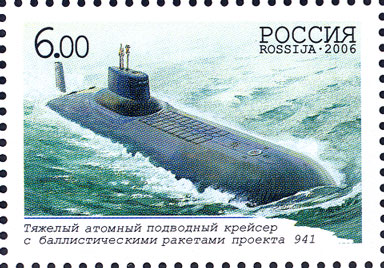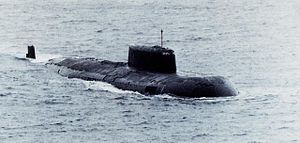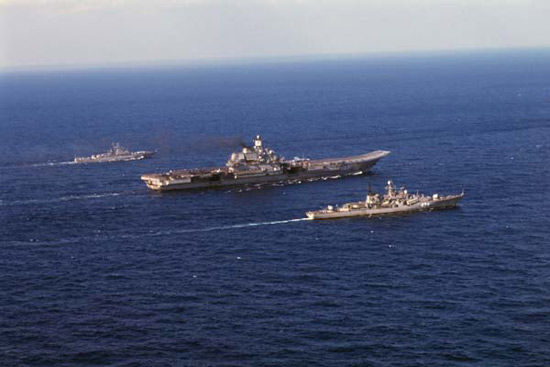 |
| A 2006 Russian stamp in honor of the Typhoon |
The Typhoon class submarine is one of the most famous class of submarines in the world thanks to its size and movies like The Hunt for Red October. The Russians refer to the submarine as Project 941 Akula, which can be confusing considering that there is a fast attack submarine whose NATO classification is Akula. The Submarine is 574 feet long and 75 feet wide, and when submerged displaces 48,000 tons. Theoretically the submarine has the capability to remain at sea for 120 days or longer with a crew of 160.
The first Typhoon was commissioned with the Soviet Navy in the early 1980's. They were built in Severodvinsk in the White Sea. The Typhoons were built by placing two pressure hulls side-by-side, and then adding a third pressure hull that you can see protruding just below the sail. Because of this construction the Typhoon has a high degree of survivability . If one pressure hull were flooded the crew could survive in the other pressure hull.
 |
| Typhoon in construction hall |
They were intended to operate under the ice so as to avoid the NATO sonar nets that blocked the path to the Atlantic. For this purpose the sail was strengthened to allow for breaking through ice.
 |
| Typhoon in drydock |
Many specialists classify the Typhoon as a second strike weapons platform, meaning that after an nuclear strike on the Soviet Union this submarine would be able to counterattack in a retaliatory strike. Because these submarines were meant to stay at sea for extended periods of time they had some creature comforts that could not be found on any other Soviet submarines. These comforts included a small swimming pool, video games, and room where the crew could relax.
 |
| Pool on the Typhoon |
To carry out this mission the Typoons carried 20 solid-fuel propellant R-39 (SS-N-20 NATO classification) missiles, with each capable of carrying 10 warheads. They are arranged in two rows in front of the sail between the main hulls. In addition to the ballistic missiles the Typhoons carried torpedo and other weapons for self-defense.
 |
| One of the missile tubes open. |
Six units were built and put into service with the Soviet Navy. Of those three units still exist, and three were scrapped under the Nunn-Lugar Cooperative Threat Reduction program. Here are the current status of the three remaining Typhoons:
-TK-208 Dmitriy Donskoy was converted to be the test bed for the new Bulava missile system. The Russian Navy has stated that this ship will remain as a test platform in the future.
-TK-17 Arkangelsk and TK-20 Severstal are both being held in reserve, and as recently as last week these submarines will be brought back into service in the near future. In order for that to happen these units would need to be refitted to carry the new Bulava missile or the Sineva missile, which is carried on the Delta-IV's.
Like with so many things that are said by the Russian leadership, only time will tell if these submarines will ever put to sea again.
 |
| DIA painting of Typhoon with a sub tender. |


















_DD-SD-99-06153.jpg)







